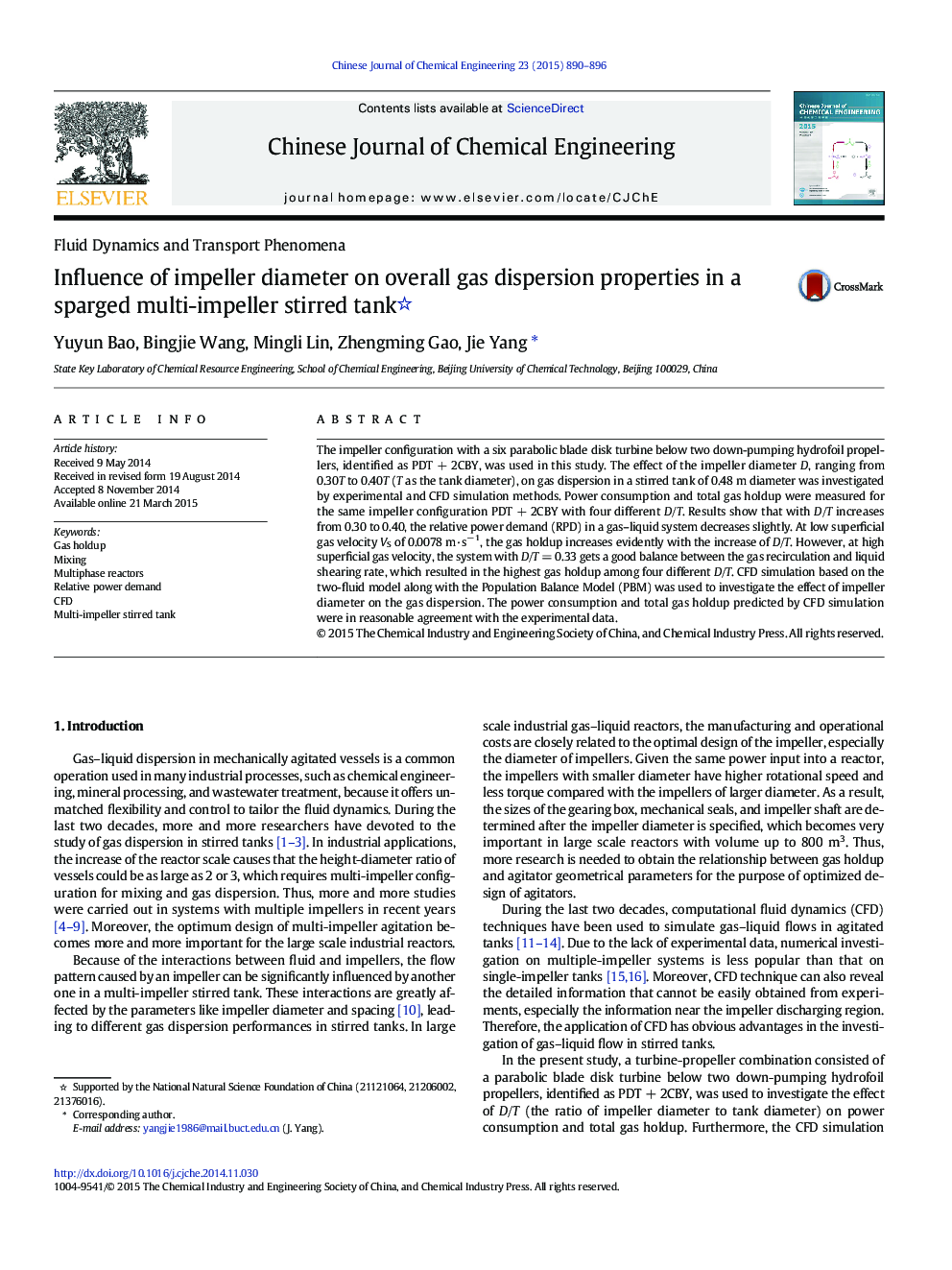| Article ID | Journal | Published Year | Pages | File Type |
|---|---|---|---|---|
| 165976 | Chinese Journal of Chemical Engineering | 2015 | 7 Pages |
The impeller configuration with a six parabolic blade disk turbine below two down-pumping hydrofoil propellers, identified as PDT + 2CBY, was used in this study. The effect of the impeller diameter D, ranging from 0.30T to 0.40T (T as the tank diameter), on gas dispersion in a stirred tank of 0.48 m diameter was investigated by experimental and CFD simulation methods. Power consumption and total gas holdup were measured for the same impeller configuration PDT + 2CBY with four different D/T. Results show that with D/T increases from 0.30 to 0.40, the relative power demand (RPD) in a gas–liquid system decreases slightly. At low superficial gas velocity VS of 0.0078 m·s− 1, the gas holdup increases evidently with the increase of D/T. However, at high superficial gas velocity, the system with D/T = 0.33 gets a good balance between the gas recirculation and liquid shearing rate, which resulted in the highest gas holdup among four different D/T. CFD simulation based on the two-fluid model along with the Population Balance Model (PBM) was used to investigate the effect of impeller diameter on the gas dispersion. The power consumption and total gas holdup predicted by CFD simulation were in reasonable agreement with the experimental data.
Graphical abstractThe effect of the impeller diameter D, ranging from 0.30T to 0.40T (T as the tank diameter), on gas dispersion in a stirred tank of 0.48 m diameter was investigated by experimental and CFD simulation methods. Power consumption and total gas holdup were measured for the same impeller configuration PDT + 2CBY with four different D/T. Results show that with D/T increases from 0.30 to 0.40, the relative power demand (RPD) in a gas–liquid system decreases slightly. At low superficial gas velocity VS of 0.0078 m·s− 1, the gas holdup increases evidently with the increase of D/T. However, at high superficial gas velocity, the system with D/T = 0.33 gets a good balance between the gas recirculation and liquid shearing rate, which resulted in the highest gas holdup among four different D/T.Figure optionsDownload full-size imageDownload as PowerPoint slide
